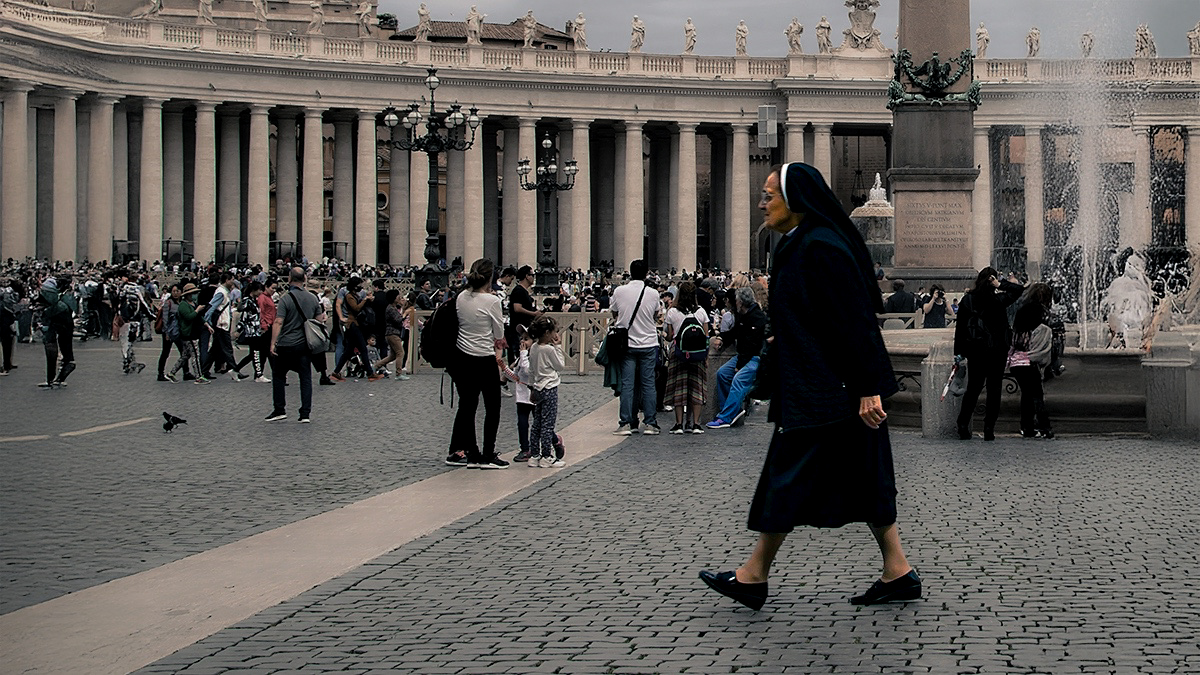Religious institutes of nuns, brothers and priests are often overlooked in today’s discussions of church renewal. Reform is usually framed around lay Catholics and clerics.
Lay Catholics can also be guilty of this tendency. Inclusivity is sometimes seen as expanding lay participation in decision-making at the expense of clerics.
This overlooks the enormous contributions of religious, especially sisters, in recent church life. It omits an important part of the Church’s shared experience.
A history of being ignored
Religious have often borne the brunt of power within the hierarchical church. They know what it is like to have their gifts ignored and to be disregarded and disrespected.
Religious sisters bore the double weight of being female in a male church. Many fought back and found their place by building safe spaces and exercising independent leadership in hospitals, schools and refuges.
Lay movements learned from religious allies
This experience has been celebrated but still deserves greater explicit recognition. When lay reform movements took root, they often failed to realise how much could be learned from religious life.
Lay Catholics found their greatest allies in religious communities. I quickly concluded that religious were role models and, ultimately, offered hope for future co-responsibility.
Unfortunately, many congregations and orders are already in decline.
Synodality showed their quiet leadership
In matters synodal, the Religious had a special place that deserved recognition, even if it was rarely equal. Their representative bodies were appendages to bishops’ conferences, where real power lay.
Religious were secondary but still an example of what future lay bodies might hope for — a small seat at the table.
Experts in discernment and dialogue
When synodal methods such as spiritual discernment or conversations in the spirit were adopted in church assemblies, it was the Religious who brought the most experience.
They understood both the benefits and the limitations of these methods because, Ignatian or otherwise, discernment was their regular way of collective decision-making.
In Australia, Jesuit Brother Ian Cribb shared his expertise in spiritual discernment with all Plenary Council members, including bishops.
Sister Nathalie Becquart of the Congregation of Xavieres offered further guidance from the Synod secretariat in Rome. On the council floor, religious were brave in speaking their minds and wise in bridging differences.
Vatican shifts slowly toward visibility
As Pope Francis sought greater gender balance among the staff of Vatican dicasteries, it was mainly sisters, rather than lay women, who were appointed.
When major papal announcements were made, the Vatican gradually learned that the modern media expected a female face.
At the recent announcement of the papal exhortation Dilexi Te, Sister Clémence of the Little Sisters of Jesus provided that visible female presence on the panel.
Religious women breaking barriers
Though in numerical decline, Religious have made significant bureaucratic breakthroughs within the Vatican. Religious women have steadily improved gender balance in key Church positions.
It is their time to shine, and their experience has much to teach lay Catholics.

- John Warhurst is an Emeritus Professor of Political Science at the Australian National University. He was a member of the 5th Plenary Council of Australia from the Archdiocese of Canberra-Goulburn in 2020-2022.

